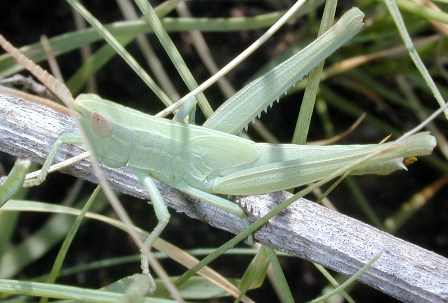The Grasshopper’s Cypress
Psalm 147:7-8
“Sing unto the LORD with thanksgiving; sing praise upon the harp unto our God: Who covereth the heaven with clouds, who prepareth rain for the earth, who maketh grass to grow upon the mountains.”
A grass like plant called the grasshopper’s cypress specializes in manufacturing an animal hormone. Plants make many kinds of chemicals. However, the chemical production of the grasshopper’s cypress is too specialized to be dismissed as accidental.

On the other hand, the grasshopper’s cypress makes the most widely occurring hormone that affects insect growth. The chemical, called a juvenoid hormone, is believed to influence insect molting and growth. When the hormone is present, a larva will molt into a larger larva. However, the hormone must be absent for the larva to molt into the pre-adult stage, called a pupa. Even though grasshoppers don’t have a pupa stage, the insect will not develop normally if it has the juvenoid hormone in its body. Scientists found that when young grasshoppers were fed grasshopper’s cypress they developed abnormally, with twisted wings and underdeveloped eggs.
The grasshopper’s cypress has indeed found an effective way to control insect pests. One scientist tried to dismiss the remarkable chemistry of the grasshopper’s cypress as nothing more than an accident of evolution. However, biochemistry is far too complex a field to leave to chance. That’s why God was personally involved in making all living things.
Prayer:
Dear Father in heaven, I could never understand how You can be personally involved in everything that goes on in the creation. Yet this is what I read in Your Word, from Genesis to Revelation. Help me to believe this comforting truth, especially when I am troubled. In Jesus’ Name. Amen.
Notes:
Edwards, D.D. 1990. “A leafy home for one insect hormone.” Science News, v. 133. p. 326.